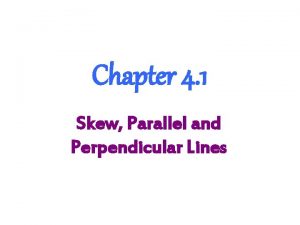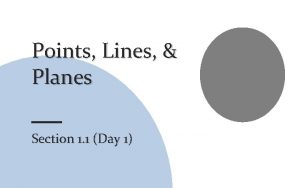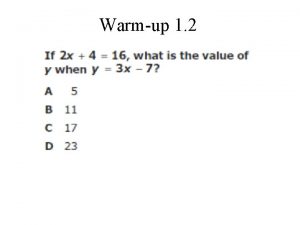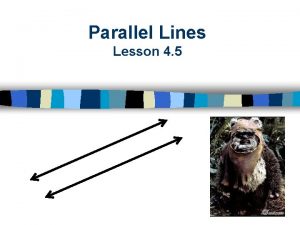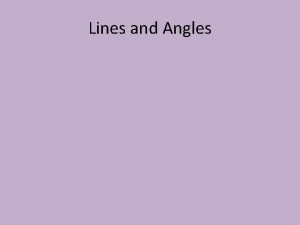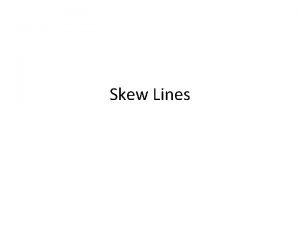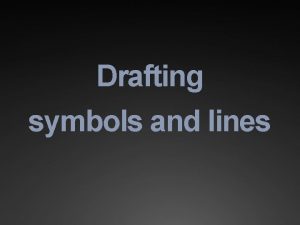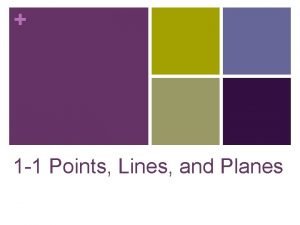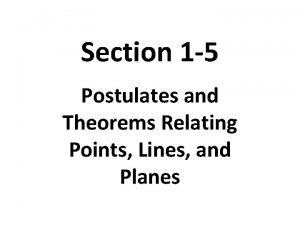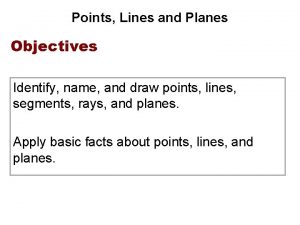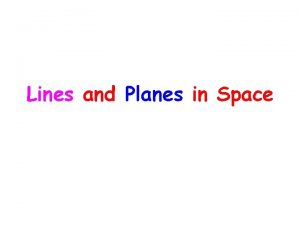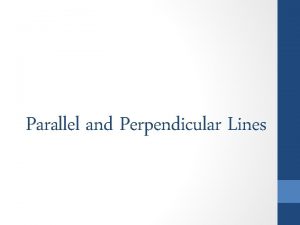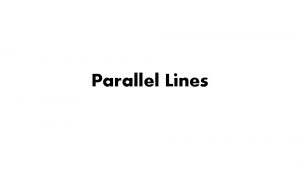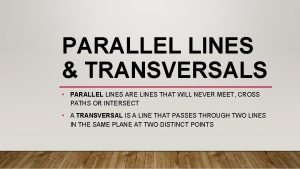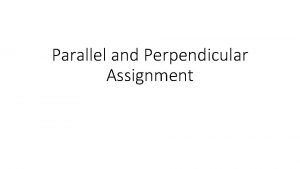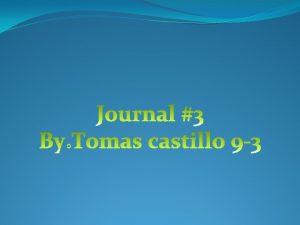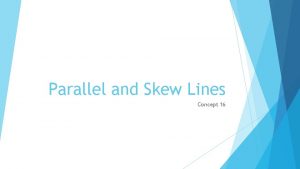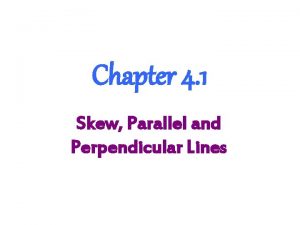Planes and Lines the Concepts of Parallel Skew













- Slides: 13

Planes and Lines: the Concepts of Parallel, Skew and Transversal Section 3. 1 Big Ideas Geometry

Definition of Parallel Lines � Parallel Lines: Two lines that do not intersect and are coplanar ◦ The symbol for parallel is || and is read “is parallel to”. So m||n reads “line m is parallel to line n” m n

Definition of Skew Lines and Parallel Planes � Skew Lines: Two lines that do not intersect but are not coplanar � Parallel Planes: Two planes that do not intersect each other

From Unit 1 � Perpendicular a 90° angle Lines: two lines that intersect at ◦ The symbol for perpendicular is ⊥ and is read “is perpendicular to”. So m⊥n is read “line m is perpendicular to line n”. m n

The Parallel and Perpendicular Postulate � Parallel Postulate: If there is a line and a point not on that line, then there is exactly one line through the point parallel to the given line p n m

The Parallel and Perpendicular Postulate � Perpendicular Postulate: If there is a line and a point not on that line, then there is exactly one line through the point perpendicular to the given line m n p


The Transversal Line � Transversal Line: a line that intersects two or more coplanar lines at different points ◦ We say that t is transversal to lines m and n t 1 3 2 n 4 5 6 7 8 m

4 Pairs of Angles � 1. Corresponding Angles: two angles that have corresponding positions. In the diagram, ∠ 2 and ∠ 6 are corresponding angles since each is above its respective line and to the right of transversal t ◦ ∠ 1 and ∠ 5, ∠ 3 and ∠ 7, ∠ 4 and ∠ 8 are the other three corresponding angle pairs

4 Pairs of Angles � 2. Alternate Interior Angles: two angles that lie in between the two lines and on opposite sides of the transversal t ◦ ∠ 3 and ∠ 6, ∠ 4 and ∠ 5 are the alternate interior angle pairs

4 Pairs of Angles � 3. Alternate Exterior Angles: two angles that lie outside the two lines and on opposite sides of the transversal t ◦ ∠ 1 and ∠ 8, ∠ 2 and ∠ 7 are the alternate exterior angle pairs

4 Pairs of Angles � 4. Consecutive Interior Angles: two angles that lie between the two lines and on the same side of the transversal t ◦ ∠ 3 and ∠ 5, ∠ 4 and ∠ 6 are the consecutive interior angle pairs

Bibliography � https: //www. jackson. stark. k 12. oh. us/site/ha ndlers/filedownload. ashx? moduleinstanceid= 371&dataid=1941&File. Name=geometry%20 le sson%203 -1. pdf � Google Maps
 Skew lines
Skew lines Naming a plane
Naming a plane Lesson 1-3 segments rays parallel lines and planes
Lesson 1-3 segments rays parallel lines and planes Parallel lines lesson
Parallel lines lesson Def of parallel lines
Def of parallel lines It refers to the focal terminus of fingerprint pattern
It refers to the focal terminus of fingerprint pattern Blackpier capital
Blackpier capital Used for drafting symbols or repetitive symbols.
Used for drafting symbols or repetitive symbols. Skewiff definition
Skewiff definition Points lines and planes vocabulary
Points lines and planes vocabulary Parallel lines
Parallel lines Postulates and theorems relating points lines and planes
Postulates and theorems relating points lines and planes Examples of points lines and planes
Examples of points lines and planes Lines in space
Lines in space
